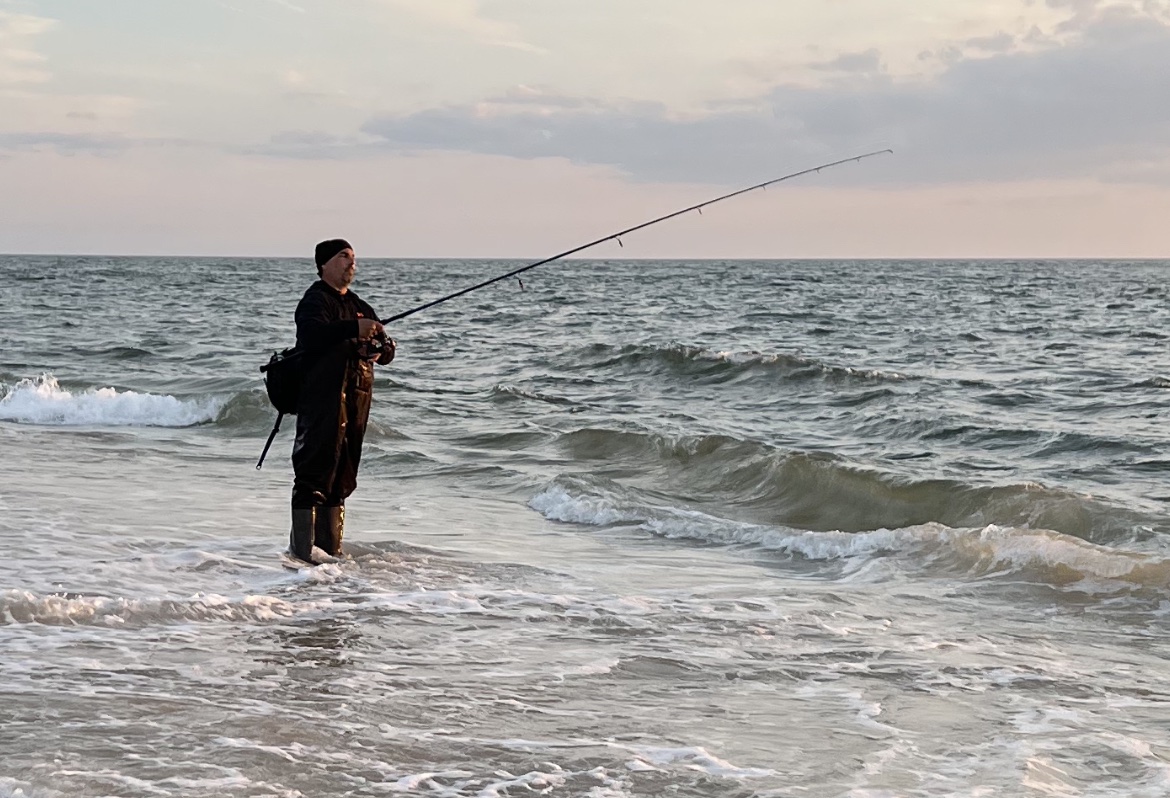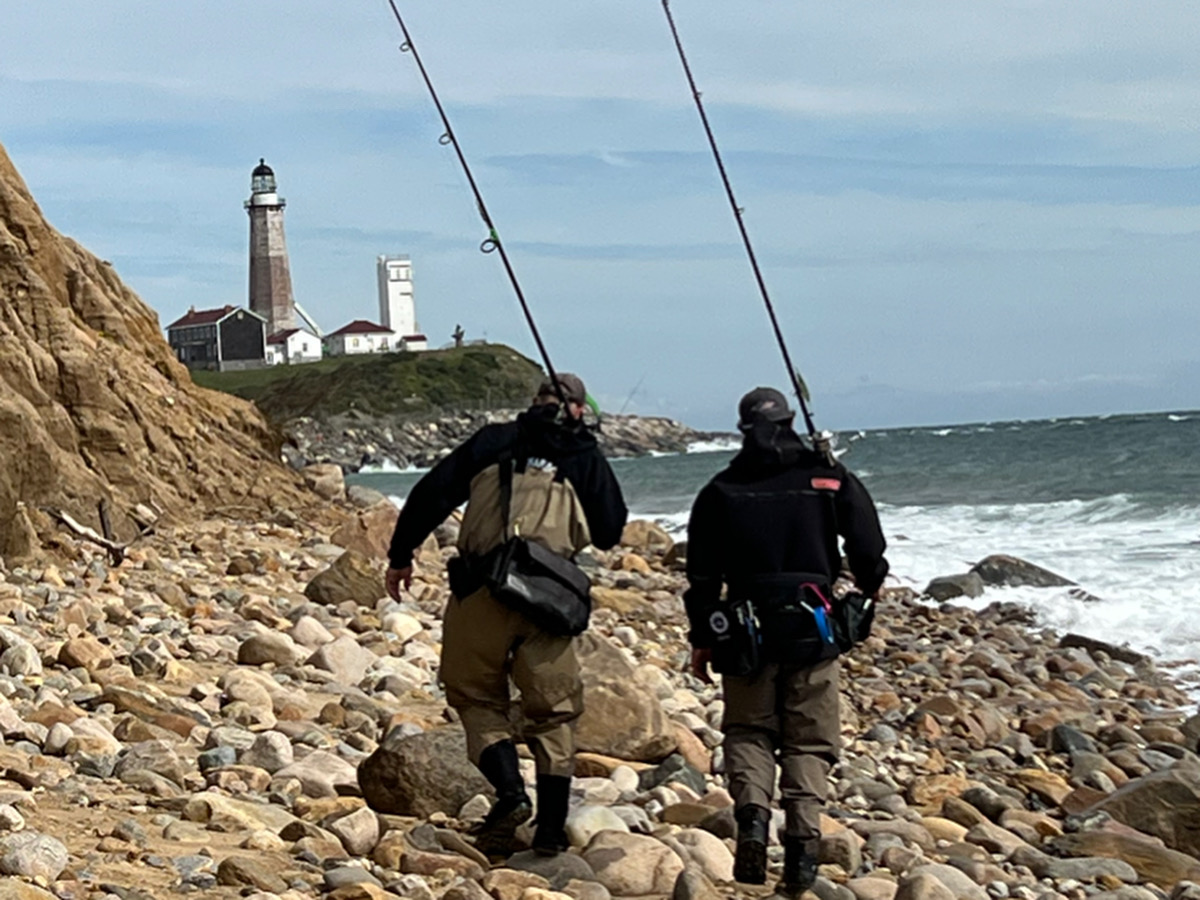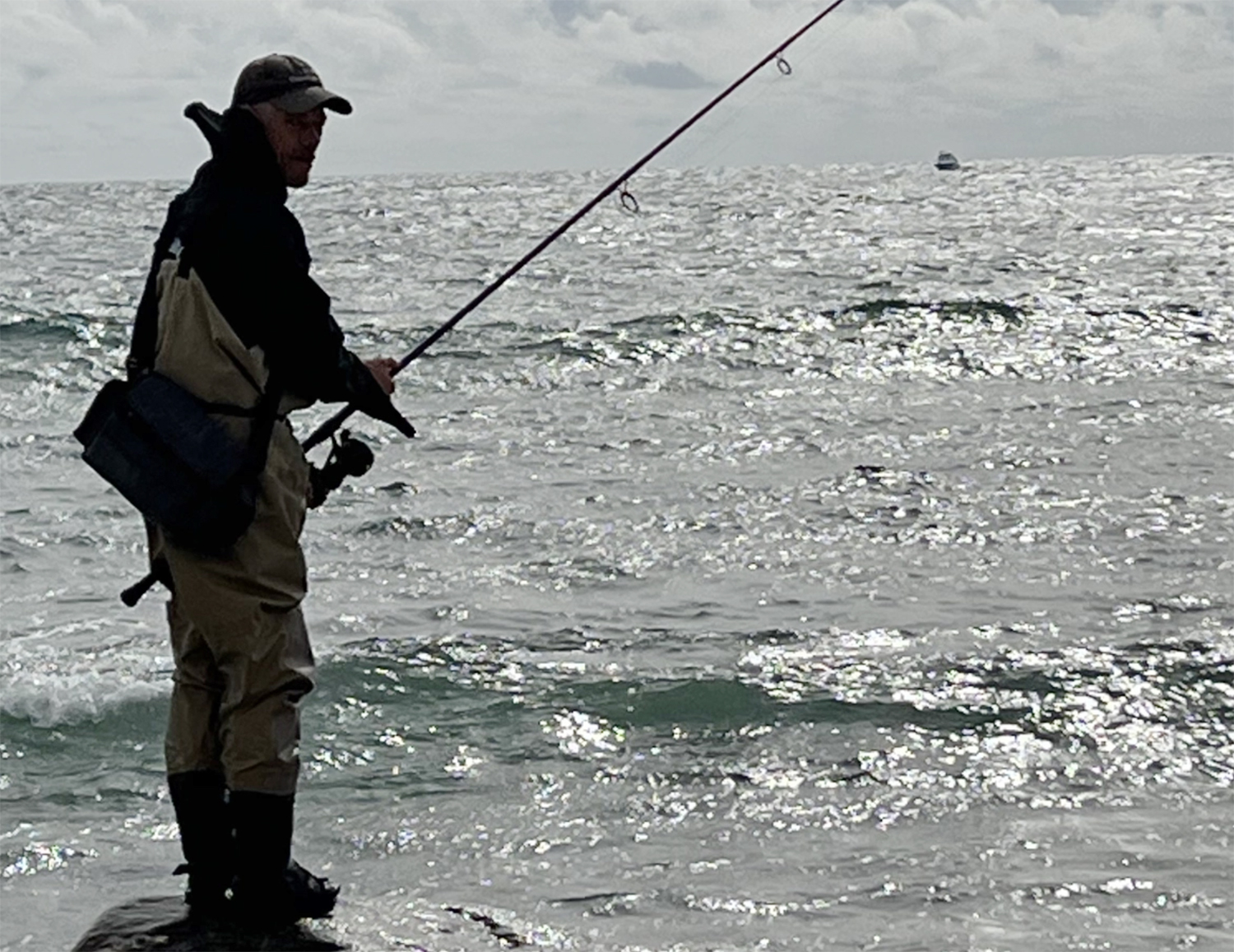East End Surfcasting 101 with Dan's Papers 'Fishing Guy' Morales

It’s 2023 and it seems that the pandemic is behind us now. Summer is in the air and as it gets warmer outside, people are looking to keep their New Years resolutions and pick up a new outdoor hobby. I’m seeing more and more new fisherman out there on the beach who are new to the sport of surfcasting.
This is a more active type of fishing where you put on waders and actually get in the water using lures rather than bait to catch fish. As with many sports, your equipment is important and can often be expensive.

GEAR UP FOR SURFCASTING
One of the best things about surfcasting is that the fish don’t care how much you paid for your gear. I’ve caught the same fish on a $40 Walmart rod and reel as I’ve caught on my high-quality pro-grade setup, and the ones I kept tasted just as delicious.
Most people use a 10-foot rod while some prefer an 11-foot rod for fishing on the ocean to keep the line above the waves. Avid surfcasters tend to use a fully sealed reel, which can be quite expensive, but there are plenty of less costly alternatives. You don’t have to break the bank to find a good reel that’ll get the job done and, with regular cleaning and greasing, last several seasons.
As for tackle, you’re going to need a few different lures. You can start out simple with an SP minnow, a few diamond jigs (A17 A27) and a few white bucktails. (3/4 oz.-2 oz.) Your local bait shop will be happy to help you find what you’re looking for and set your reel up with a fresh spool of the proper braided line for your needs. Usually the folks are even nice enough to tell you where you might be likely to find some fish, so don’t be afraid to ask.
There’s a ton of great tutorial videos on YouTube where you can learn how to properly retrieve whatever lure you want to use. I like to find a quiet spot where I can be alone to practice working them. This way you can get a feel for casting and reeling in each of your lures. The internet is also great for learning how to tie whatever knots you’ll need depending on what type of fish you’re going for and what’s in season.
This is important for tying on a proper leader to protect the braided line from damage. While the water is still a bit too cold to bare without them, waders are a must to keep you dry in the surf. Amazon has many different inexpensive options and Dick’s Sporting Goods also carries a decent selection in various sizes if you don’t want to wait for a pair to be delivered.
Now that you have what you need to get out there, it’s time to go fishing!

SURFCASTING LIKE A BOSS
What you want to look for in a good fishing spot once you get out on the beach, are places where the water looks different from the surrounding areas. Rip currents are another thing to look for as well on the beach and can be great places to find fish. Inlets tend to be a favorite spot for many anglers but are often harder to get to on foot and seem to fill up fast on the weekends, so you need to get there early if you want a decent spot.
Rock jetties are yet another great place to cast your lures but it’s very easy to sheer your line off on the rocks or get your lure stuck in them as well. It’s not a great place for beginners with those rocks being very slippery. So, depending on the jetty itself, you may want to wait until you’re comfortable on the rocks before casting from those spots. This can be a dangerous place to fish, so always use the buddy system.
Back bays are usually the place to be in the early spring. The fish come into the bay and feed on baitfish in the warmer water and it is great protection from the south winds.
Striped bass tend to hide back there when the weather is stormy early in the season and even throughout the year on those rainy nights.
Bluefish and fluke tend to love these places too for the same reasons making the back bays a great place to find a bite when out front (the ocean side) is too rough to fish. As the season picks up and the water gets warmer, however, it’s much easier to find fish on the ocean side. You want to search for a reliable tide chart and catch the first and last two hours of either tide preferably, so keep that in mind before heading out.
With so many different styles of fishing, you’re going to want to find what works for you and stick with that. It’s all about comfort and confidence, so take your time and enjoy what you’re doing because being frustrated will only cause mistakes.
You don’t want to get a hook stuck in your hand (or anywhere else) because you weren’t paying attention. It’s easy to get disappointed when you can’t get a bite and maybe a few things aren’t going your way, but it’s called fishing not catching.
We all get “skunked” from time to time. That’s just the way it goes sometimes so learn everything you can from days like that as it comes in handy remembering the conditions from those outings.
The New York State Department of Environmental Conservation website has all the info you’ll need to get you properly setup with everything needed to ensure a safe and enjoyable outing. We live on an island, making it ideal for people who fish, and people who want to learn how.
Surfcasting is just one of the many ways to get out and take advantage of the vast natural resources we have here on Long Island. It’s a sport unto itself and aside from it being a great way to relax outside on a beautiful day, it’s not a bad way to get a delicious meal.
Good luck fishing and catch ’em up, folks!



